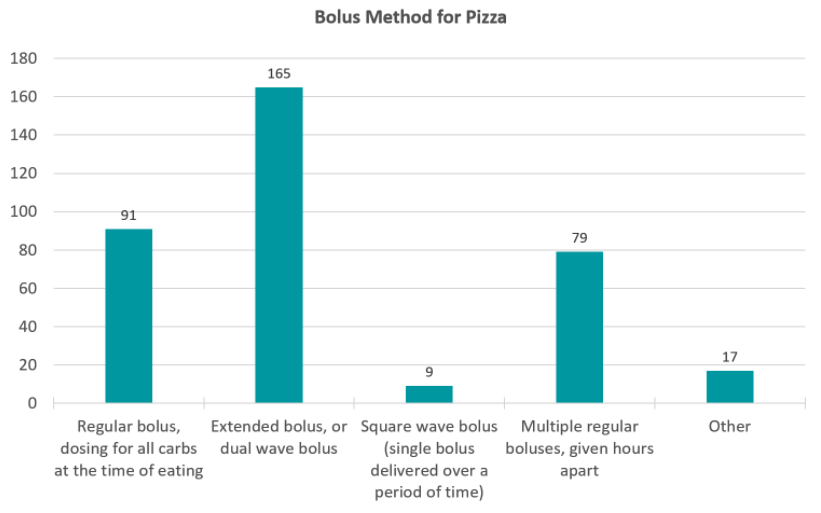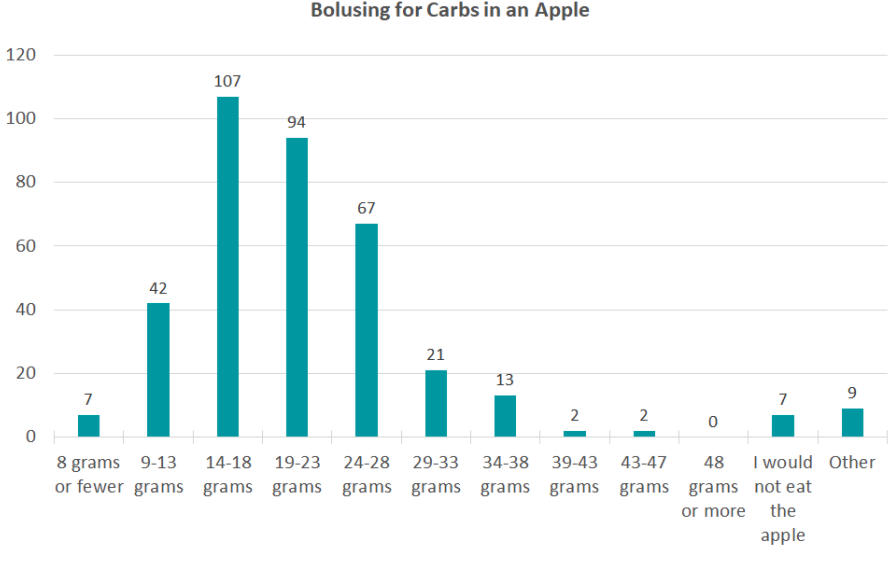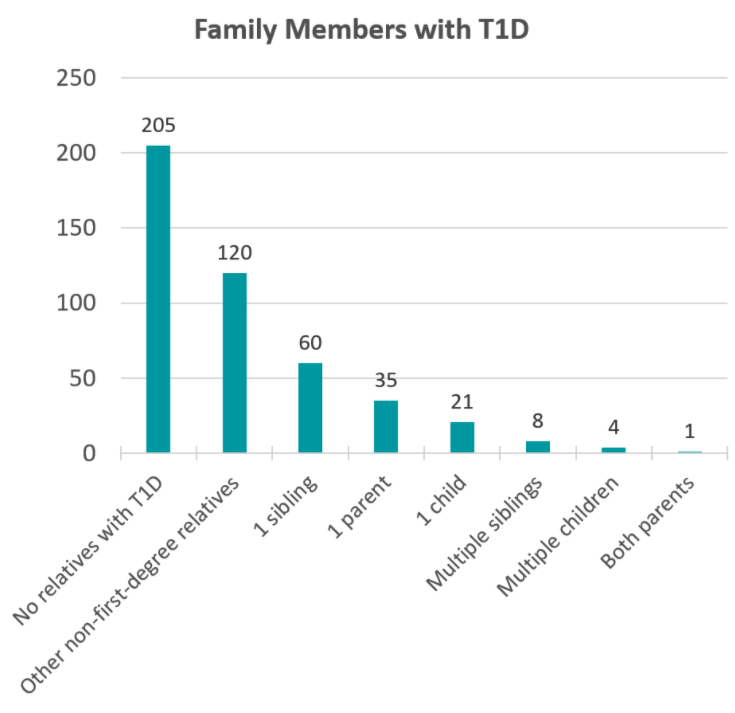
Sign up for a new account.
And get access to
The latest T1D content
Research that matters
Our daily questions
Sign up by entering your info below.
Reset Your Password
Don't worry.
We will email you instructions to reset your
password.
What We Learned from the Online Community This Month
Thank you to every member of the T1D Exchange Online Community for inspiring others who come to this community for advice and to know they’re not alone. Here is what we learned from the 3 most popular questions of June 2021!
If you have T1D, have any of your family members listed below also had T1D? Select all that apply.
June’s most popular Question of the Day received responses from 403 people, with 460 of the options selected. About half of respondents to this question selected that they have no relatives with T1D at all, but on the other hand, 29% have at least one first-degree relative with T1D.
Several commenters discussed how they were the only ones in their families with T1D, but several told stories about their diagnoses as well as those of their family members. Others theorized about potential triggers for T1D.
Here are some popular comments for this question:
- “I’m the oldest and was diagnosed in 2000 at almost 11 years old. One of my sisters was then diagnosed in 2008 at 10 years old, and my brother was diagnosed in 2017 at 16 years old. No issues for my other sister and no other family history, so we have no idea why three of us were affected!”
- “I think I had the right combination of propensity, environmental conditions and my kids getting the chicken pox to get T1”
- “My dad was the first in his family to be diagnosed, in 1931, just after insulin was commercialized. He was an only child at the suggestion of my grandparents’ family doctor. I was diagnosed at 18 months of age, two out of three younger brothers were diagnosed at ages four and six. My eldest of three sons was diagnosed with T1D at eight months of age, so far my two other sons are fine. My eldest son’s daughter was diagnosed at 18 months.”

How do you bolus for pizza?
Pizza is a notorious food among people with T1D. We wanted to gauge how people bolus for pizza, and we got a wide variety of responses.
43% of people who answered this question responded that they give themselves an extended bolus, or a dual wave bolus. This is a bolus option on many insulin pumps that delivers some insulin immediately, and some insulin delivered over an amount of time selected by the user.
Here’s what some community members say works for them:
- “I’m looping using automatic bolus. I get a series of small boluses (boli?) to compensate for metabolism of pizza. Works really well! Been looping for 5 months now (T1d for 43 years) and am within range about 80% of the time. No food is a challenge anymore.”
- “I make my own veggie pizza with an ultra thin crust that I purchase. I don’t load with cheese, just sprinkle parmesan cheese on top. Because I do MDI, I just bolus before I eat and limit the amount to 2 slices.”
- “Auto Mode on the Medtronic 770g system does not allow Dual or Square Bolus, therefore it is a regular bolus and watching my glucose trends. If I am not in Auto Mode, a rare event, then I use the Square Bolus.”
- “Similar to MDI, but inhaled insulin offers fixed cartridges. I usually will inhale twice just as a patient on MDI might give two shots. I find I need less insulin up front and about 90 – 120 minutes later I need a second dose. Ratio of about 40% of my dose once BG starts to rise, and 60% as a f/u dose.”

If you were about to eat a medium-sized red apple and were unable to measure the exact size of the apple or look up the carb count, for how many grams of carbs would you realistically bolus?
The third most popular question of the past month was asked because the size and sweetness of apples is so variable, but we wanted to see how people bolus when they are handed an apple that they are not able to measure.
The most common answer to this question was 14-18 grams, with 28% of people selecting that response. Only 11% said they would bolus for 29 or more grams of carbohydrates, and another 2% of respondents said they would not eat the apple if they were not able to measure it or look up the carb count for that specific type of apple.
Here is what some folks in our Online Community shared:
- “Ripeness affects how quickly we are able to breakdown the sugar giving the illusion of more sugar with riper fruit since the sugar is more easily broken down and spikes numbers faster.”
- “My response is 14 to 18, BUT…I regularly eat an apple every day, and have done so during my 66 years living with diabetes. What has become apparent to me, is carb count depends heavily on species of apple and the degree of ripening.”
- “I have no idea how many carbs are in an apple, but it doesn’t matter. Granny Smith apple with peanut butter replaced cake/cookies/etc. as an acceptable dessert after my diagnosis about a decade ago. I know that (for me) a small/medium apple with a little PB requires 4-6 units of insulin given at least 15 minutes up front and at least 1 unit being delayed over the following hour – depending on how liberal I am with the PB. I usually achieve a straight line with a just a little hump on my Dex with this, though at other times exercise/stress levels/time of day/how long my Omnipod has been on/(the wind, the sun, the stars) can wreak havoc with BS and need to be accounted for after the fact.”
We learn something new every day from this community’s Question of the Day responses. Thank you for sharing your experiences and wisdom with us!
If you are not already a member of the T1D Exchange Online Community, join us by clicking the “Join” button at the top of this page.








